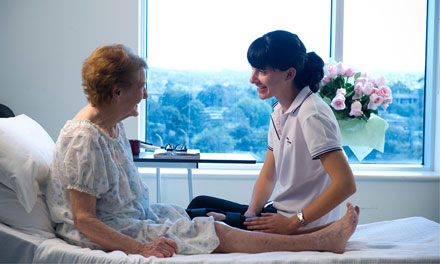The Australian health system is world class in effectiveness and efficiency: Australia consistently ranks in the World Health Organization's best performing group of countries for healthy life expectancy and health expenditure per person.
 University of Melbourne physiotherapy student in clinic with a patient (University of Melbourne)
University of Melbourne physiotherapy student in clinic with a patient (University of Melbourne)
Medicare is Australia's public health system, providing free public hospital care and subsidies for primary care. Medicare ensures that all Australians have access to a broad range of quality health services at little or no cost. The Australian Government provides significant financing for the health system, working closely with state and territory governments with responsibility for on-the-ground delivery of hospital services. A private health sector complements the public system.
The non-Indigenous Australian population has a generally good health status with an average life expectancy at birth of 83 years (80 for men and 84 for women), one of the highest in the world. There are some groups with poor health status, and improving the life expectancy of Indigenous peoples is a national priority. Generally, the pattern of disease in Australia is similar to that of other developed countries.
The Royal Flying Doctor Service
One of Australia's best known and respected institutions is the Royal Flying Doctor Service. The Flying Doctor is a charity that operates a fleet of more than 63 planes from 21 bases around the country. Every day doctors, nurses and paramedics fly large distances to attend to patients or conduct clinics in small towns or on remote properties. Often they escort patients back to larger centres for hospital and medical treatment. The Royal Flying Doctor Service began in 1928 and every year has more than 290,000 patient contacts a year—the equivalent of one every two minutes.